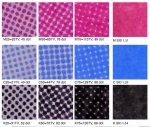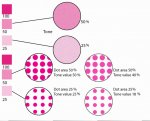I have to disagree. This thread, and its posts, tells me that it was "art" that got the OP into trouble in the first place. It also showed that throwing "art" at the problem to try and solve it was not effective.
Most printers are not schooled in process control or scientific methodology (despite the efforts of their elementary school teachers) so they are often at a loss to know how to go about setting up a proper deterministic print manufacturing process. Nor to they have a systematic approach to resolving issues when they arise.
"Art" should be fired from the manufacturing departments.
Interesting, very interesting.
Although I've spent 25+ years in prepress and a lifetime trying to get people to understand some of the most fundamental principles of deduction, this is the first time I've been personally/physically involved in solving a specific problem on press.
I am presently trying to explain and persuade management of the need, value and ROI of "process controls".
Process control, management, documentation and analysis all sound like marketing hyperbole to most traditional printers. "This is the way we've always done it!". "Have you ever run a press?". "We have estimating programs that do that." etc., etc.
There is no point in arguing, "A man convinced against his will, is of the same opinion still."
The only way traditional printers will accept and benefit from process control is to put it into practice and let them see/measure the results.
Going home everyday at the end of a productive shift, producing work they can be truly proud of is just one huge, collateral benefit of process controls for press operators and management.
Without process controls in place, every problem becomes a chaotic "cat herding" event that inevitably ends in bandaid fixes, tempers flaring and discouraged employees and customers.
Don't get me wrong, we have great press operators who pull rabbits out of hats, but they are getting really tired and fed up of being the star attraction in a dysfunctional circus.
If I can get management to let me implement process controls the circus will be back in town with smiles on every face and free candy floss for everyone.













